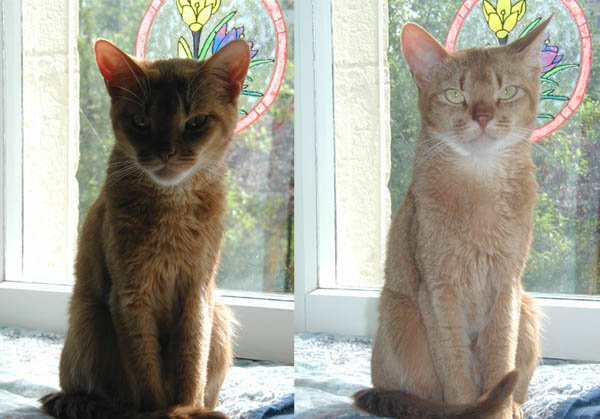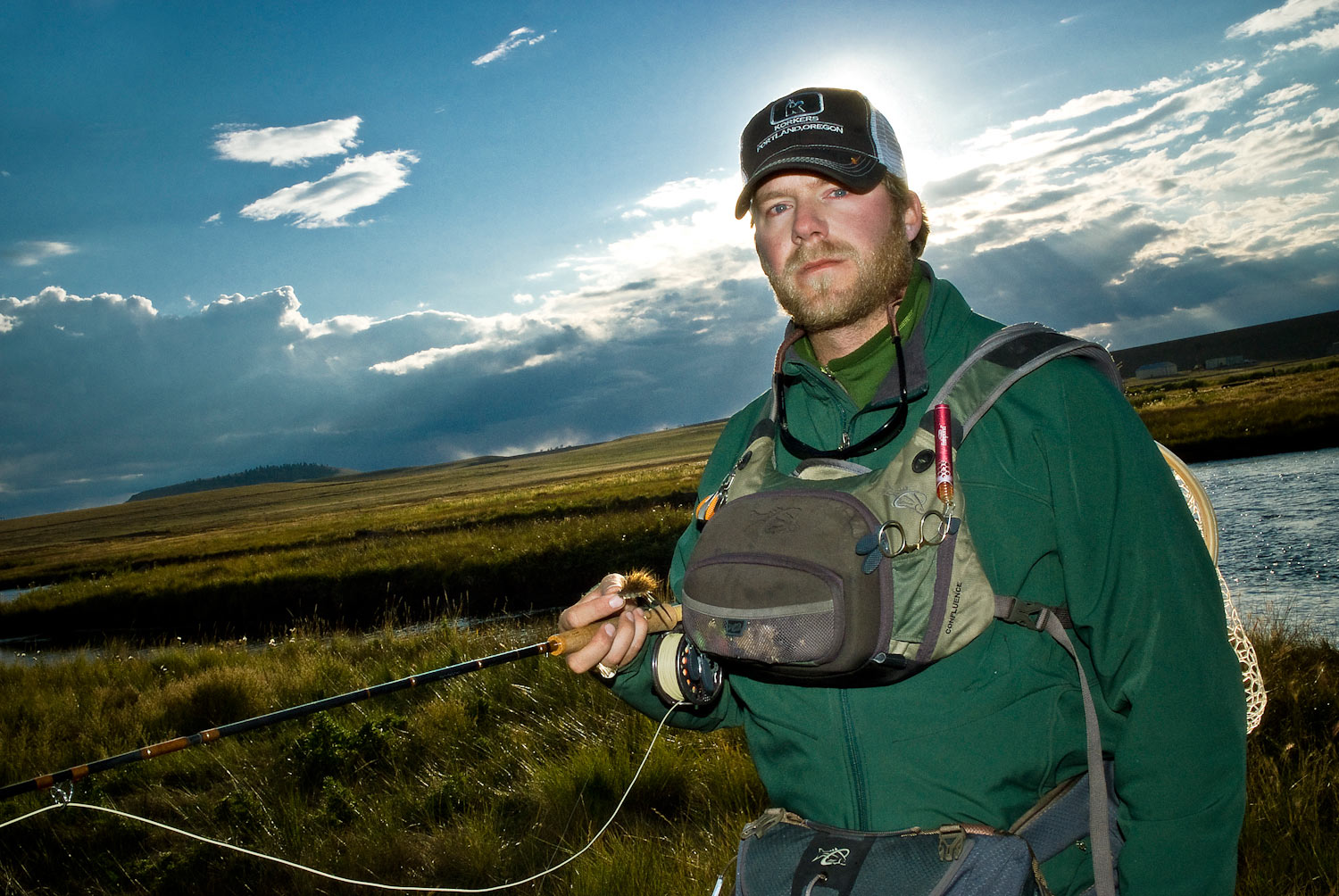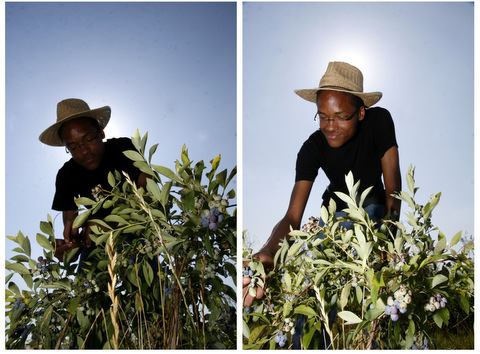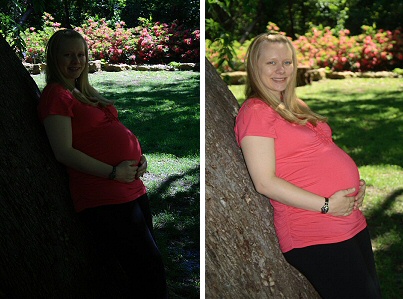Fill flash
Under flash methods refer to different approaches in the use of the flash light in photography. The flash methods differ:
- In the task of the flash as main, Fill-in, auxiliary light
- At the time of delivery of the light within the exposure process or before
- In the way of the flash (one pulse or strobe )
- In the dispensing direction of the light ( directly or indirectly)
- In the type and the position of the flash
Methods
Bolt at the first shutter curtain
This is the oldest flash method and is able to use any combination of flash and camera, if at all a way to flash sync is available. The flash fires right after the shutter opens. The amount of light is measured either from the camera or from a built- in flash unit sensor on and off the flash after sufficient exposure. The technique is also applicable to unregulated flash units. The lighting time of the flash is significantly shorter than the open period of the shutter in the rule.
For fast- moving subjects and a significant ambient light arise often unnatural motion blur, as the sharply outlined by lightning motif stands as it were at the beginning of the movement. A left-to- right -moving car at night seems so left in the picture, by his lights out performs a light track to the right into the apparent nothingness.
Flash on the second curtain (Rear -Sync)
After the opening of the closure the available light is first captured. The flash fires just before the end of the exposure. This technique is used reliably only with coordinated flash units or built into the camera flashes, since the control electronics must consider the maximum burn time of the flash (see: slow sync ). This technique results in moving subjects usually a more natural presentation. In the scenario previously used as an example the flash on the second curtain creates a spotlight track that starts on the left in the picture and right ends along with the car.
Pre-flash
As a pre-flash is used in photography each ignition, a flash unit prior to image acquisition. Such a pre-flash can perform different tasks:
Reduce the red -eye ( red-eye reduction)
The red-eye effect is caused by the reflection of the flash light on the retina. This effect occurs especially in dim and dark place, if the pupils are wide open. A pre-flash to reduce the red - eye effect. The so-called red-eye flash fires at the circuit now before recording one or in close succession several very short flashes from that are triggered and controlled by the camera control. By anticipating ignited flash light, the pupil of the photographed person or animal narrow, and the red eyes are much less noticeable. However, the use of the flash may cause reflexhaftem closing of the eyelids. With the help of electronic image processing can be red-eye subsequently changed by a digital retouching.
AF -assist illuminator
(see detailed section AF assist light)
The pre-flash can also be used as an auxiliary light for the autofocus to focus a subject in difficult lighting conditions, if the camera does not provide additional or auxiliary lamp has the auxiliary light measurement system of an external flash unit is not available. For this relatively weak stroboscopic flashes are fired during the focusing that brighten the subject shortly. Disadvantages of this method are the relatively high power consumption and the irritation of the subject and the viewer through the long, harsh Stroboskopsalven.
Many modern flash models for plugging use red illuminator, which is not so bright therefore. Often a cross -like light is used to provide the autofocus a structure.
TTL pre-flash
( See also TTL flash metering )
In modern cameras and flash units in TTL measurement method of the pre-flash to better match the exposure (ratio between flash and ambient light) will be used.
This type of pre-flash fires just before the regular flash that it is often not noticed. In portrait photography and wildlife photography, it may come as the Red Eye Reduction of unwanted reflexive closure of the eyelids. The is could only be treated by switching off the TTL auto, but this is not all flash units and cameras possible. Also, in optical slave flash triggers of multiple flash systems ( see Unbridled flash) to ensure that the pre-flash is turned off, because the flash unit would otherwise ignite on the pre-flash and therefore not respond to the actual recording. The latter would also fail due to the exposed previously effected flash metering, because in reading the triggered studio flash was considered.
This means pre-flash TTL metering method was necessary with the introduction of digital cameras. In the previous methods, the TTL measurement scattered from the matt film surface reflected flash light during the recording is measured. However, the sensors of digital cameras have the reflective surface very unfavorable reflection properties, so that a measurement depending on the subject can be very inaccurate. Usually, in the pre-flash metering, the flash is measured by the duration of light exposure meters. This flash method is called by the camera manufacturers each other, Canon calls it E-TTL, Nikon i- TTL or D, Pentax P- TTL. An exotic variant measures the light reflected from the closed curtain light.
Slow, Fill - in, Slow flash
This flash method can be used with the synchronization on the first shutter curtain or second curtain. The exposure is determined by the given ambient light, the flash is usually used only as a brightener and illuminates the main subject, be alleviated by strong light-dark contrasts, and it comes to a better shadow detail in the recording.
Fill flash is useful in a strong direct light such as strong sunlight, as this exhibit strong shadows, and backlight conditions, it prevents the foreground is too dark. In gray and misty weather, he adds to the foreground to the necessary light, so the colors appear clear and pure.
It can also be used to freeze a motion to reduce the occurring at long exposure times strong blurring of moving subjects or prevent entirely.
The flash unit is often used with reduced power and brightness to the available light comes into play. Some flash units have a special Aufhellreflektor for this task, which deflects some of the light of the flash. On the other hand you need in strong sunlight or may be a particularly powerful flash to ever make an impact.
Modern automatic cameras detect usually automatically the need of brightening with flash and ignite a powered flash unit automatically ignites then typically one to -1 to -2 EV (Exposure Value = exposure value, exposure value ) compared to the general brightness reduced flash. For manual control, a balance between day and flash light is desirable. Initial tests should start with a flash intensity of -1 EV.
When you fill- the shortest possible flash sync speed is necessary in order not to be limited in the choice of the f-number. Through a long sync speed you will be forced to dim in bright lighting conditions, which in turn adversely affects the flash range.
Stroboscopic flash
During the exposure time a flash is either repeatedly ignited or used a strobe light. A moving object is thus exposed in different phases. If the ambient or background is dark and only illuminated the object, this can also be held metaphorically, similar to the method in the short-term synchronization. Depending on the frequency and speed of the object, the individual phase images closer or further apart. This method is suitable for example for motion, acceleration and deformation analyzes.
Indirect Lightning
The Bouncing ( correct: bounce flash or bouncing flash, so " abprallender " or " bouncing flash " ) is a term used in photography and thinks in English in general as a bounce flash toward the ceiling (or a light surface or a Aufhellschirm ), resulting in a much smoother and softer illumination in the rule and shadow largely avoids or at least reduces. In addition, unwanted reflections and highlights are avoided as on glasses.
However, some basic performance of the flash unit is an absolute requirement ( sufficiently high guide number ), as can be lost a significant part of the amount of light by the not insignificant prolonged path of light and its scattering at the reflection surface, where appropriate, quite far away.
Bouncer
Instead of flashing a wall or ceiling, you can also use Bouncer. This refers in photography a diffuse ( opaque ) plug adapter for flash devices. This fan out the flash so that it covers a larger area and the light is softer.
Also angled directly onto the flash plug- anklebbare or reflecting surfaces is called Bouncer. Such things can of course be made of reasonably experienced hobbyists themselves. Here and there one can also find the term Bounceboard (which is actually called trampoline ), often collapsible and optionally tinted ( gold foil ) Aufhellschirme of different sizes ( up to square meters! ), Which are predominantly used in the daylight photography or outdoors to the example, the sunlight on the subject - or parts thereof - to steer.
For devices without tilting and / or swiveling flash, there are shoe mount. However, this does not require in most cases the possibility of automatic flashing, in which the device the required amount of light even calculated (see computer flash). This is because the cell in this case is no longer on the subject, but in the direction of the reflecting surface has ( so for example the ceiling) and thus a drastic underexposure would result.
Combinations of direct and indirect flashing
Some electronic flash units allow direct and bounce flash at the same time because they have next to the hinged main flash tube additionally a most rigidly built-in fill flash; by combining both methods can also be tricky demands on the lighting deal. For example, is the central motif - such as a person in the foreground - high contrast illuminated, while the background is adjusted by the indirect main flash at the lightness and not, as often seen on amateur photos in the dark " sags ".
Of course you can also do this by using multiple flash units accomplish, with the options still potentiate: about a smaller direct lightning, an indirect main flash for the overall illumination of the scene and optionally a spot flash to highlight a specific motif part, even a contrasting color under certain circumstances.
Unleashed lightning
( see main article Unleashed Lightning )
Most flash units are mounted close to or on the camera or are integrated into the camera. By the frontal lighting motifs are mostly flat and unnatural. In addition, close to parts of the subject are often overexposed, distant sink into the shadows, and it enters the notorious red-eye effect. If you enlarge the distance between camera and flash, so you can reach easily a somewhat more natural illumination. Through the use of multiple flash units with or without additional reflectors the effort is arbitrarily be increased, but are also perfect results possible, which one can not tell the flash technology.
When off-camera flash the remote flash units are today usually not triggered by control cables, which are bulky and present tripping hazards. Instead daughter flashes are used, which are triggered for example by the master flash connected to the camera. For a focused light with multiple flash units, the use of a flash meter is very helpful, practically indispensable for studio flash units.
Open flash
Open flash refers to the - usually multiple - manual triggering a flash unit with a fixed camera (tripod) and held open camera shutter. This technique has two benefits: Repeated triggering the maximum power of a flash unit can be multiplied: each aperture step brightness gain is the number of times the flash to double. Second, position, direction and power of lightning between the triggers can be changed to simulate the effect of multiple light sources and achieve an accentuated or shadow-free illumination.
Because of the time required to open the flash technology is suitable only for static subjects. As the camera shutter remains open between the firings and the photographer must move sometimes by the recording field, is the lowest possible ambient light advantage. The flash unit is used must have a manual shutter chance and if possible also independent of the TTL control the camera power control.
The open flash technique is particularly useful for long-range illumination, labyrinthine, lightless environments with minimal resources and is therefore a typical technique for example in the cave photography. In the studio photography of the open flash technique is used when it is so strongly dimmed to achieve the greatest possible depth of field that the required amount of light exceeds the capacity of the flash unit.










